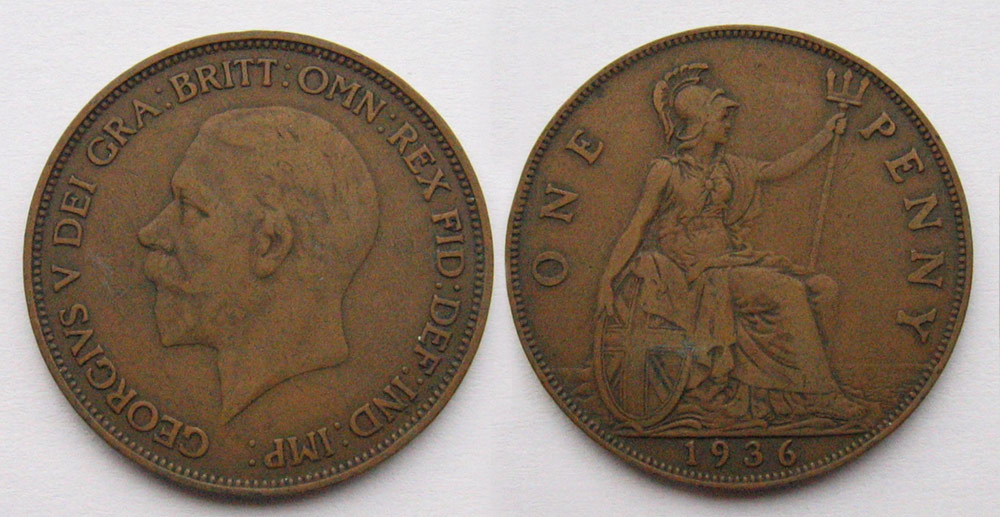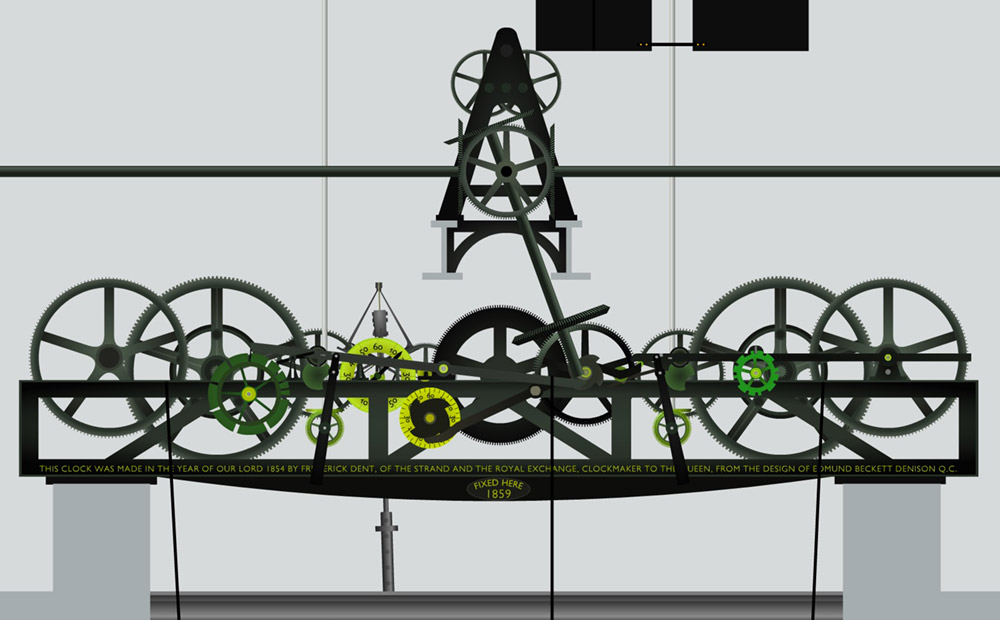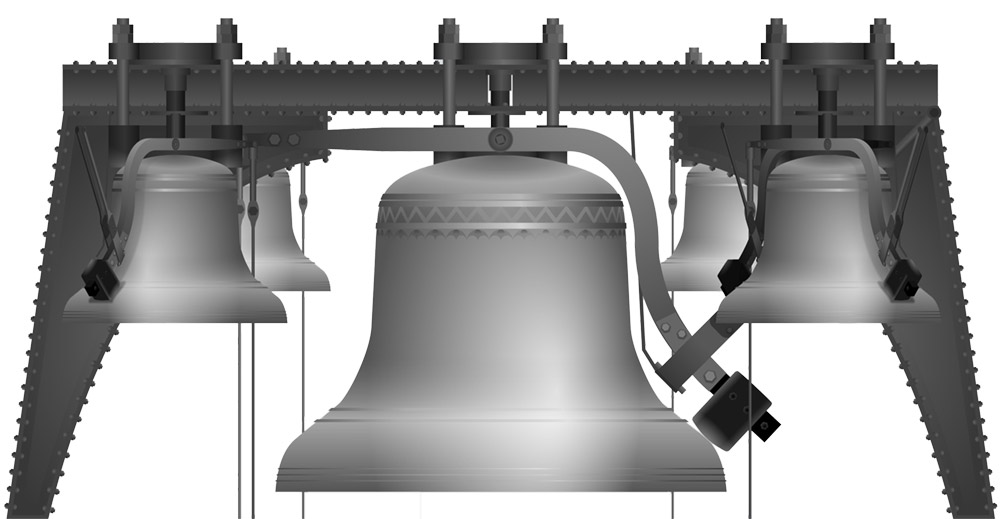Big Ben and clocks like it are powered by weights on steel cables with pulleys that drop slowly and must, of course, be wound back up regularly around a large drum. Big Ben is a “three-train flatbed clock,” and its mechanism can be divided into three parts each requiring its own power source. There is the strike train of gears which controls the Big Ben bell that sounds the hours, the chime train for the four bells that mark the quarter hours, and the going train for displaying the time on the clock faces. The weights for the bells are wound with the help of an electric motor, but – and I’m not sure why this is necessary – the weight for the going train is cranked back up by hand three times a week by the three resident Westminster clockmakers or “clock managers.”
The clockmakers also do a time check three times per week and oil the gears to keep Big Ben constantly accurate to within +/-2 seconds. They do this by taking a reference time by telephone, noted on a hand-held stopwatch, and then checked against the bell. They record the results along with the barometric pressure and temperature in the clock room in a log that has over 100 years of records – the actual recording today is on A4 paper on a clipboard and computer software is also used, of course, rather than some giant gilded book one might imagine. If it is found to be running at all fast or slow, they must essentially “regulate” it to correct the deviation.

Among the more marvelously quaint and charming parts of the whole thing is how the regulating is done. That is by adding pennies in a stack to a small shelf near the top of the pendulum as it swings – and not just any pennies, but specifically old pre-decimal English pennies, like the one shown above. It is not the weight of the penny that affects the interval of the pendulum’s swing but rather that the pendulum’s center of mass is changed. Adding the penny moves its center of mass up and effectively “shortens” it by a tiny amount. One such penny added will increase the rate by two fifths of a second per 24 hours.
Not only the visual image of Big Ben is significant, but the sound of its chimes are perhaps equally recognizable the world over – even if not everyone will necessarily associate the two. Every 15 minutes, four bells ring out 16 notes from Handel’s Messiah, and about 20 seconds before the hour, followed by about a seven-second pause, the hour is struck by hammers against the 13-ton Big Ben in the center, sounding an E note. The first strike is on the exact hour, and counting the number of strikes tells you the time. When first built, in quieter times, we are told that the bell could be heard for 10 miles. Nowadays, due to noise pollution, it can barely be heard for half a mile. Hear the quarterly chimes below followed by Big Ben itself.
Aside from the constant attention and maintenance Big Ben requires that has already been mentioned above, a nearly 160-year-old clock, bells, and the tower housing it naturally need occasional servicing. For watch lovers that complain about the expense and long service times for their mechanical watches, the £29m and four years required for this project perhaps offers some perspective, if little consolation. Renovations will include some modern conveniences for the tower, such as an elevator.

The scaffolding is already up, and completion of the project is planned for 2021, but the bells will still ring on certain special occasions such as New Years. The primary reason for stopping the bells is to protect workers’ hearing from Big Ben’s 118 decibels and related safety concerns. The clock itself including its four dials will also be dismantled, cleaned, and repaired but even during most of the repairs the clock hands will continue to display the time, driven by an electric motor.
Podcast: Play in new window | Download



